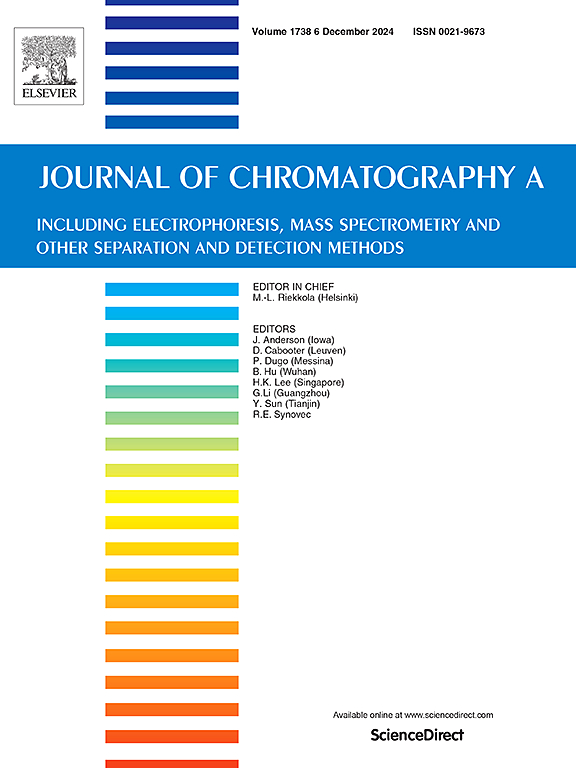Complementarity of two-dimensional gas chromatography and two-dimensional liquid chromatography for the analysis of depolymerised lignin
IF 3.8
2区 化学
Q1 BIOCHEMICAL RESEARCH METHODS
引用次数: 0
Abstract
Two-dimensional gas chromatography (GC × GC) and two-dimensional liquid chromatography (LC × LC) are nowadays widely used in academia and industry due to their high separation power. However, as far as we know, the complementarity of these two techniques has not yet been thoroughly studied based on the analysis of the same sample. Therefore, this was undertaken here by analysing the liquid fraction obtained after depolymerising a natural waste – lignin – with GC × GC and off-line comprehensive LC × SFC (SFC: supercritical fluid chromatography). Using complementary techniques is also important for lignin valorisation, as thorough structural characterisation of the depolymerised product can aid with developing and improving valorisation processes. For the tentative identification, NIST library was used for GC × GC–MS results and MS-DIAL together with SIRIUS for LC × SFC-MS/MS data. This allowed to study which compounds are detectable with the different 2D methods but also to discuss the limitations of the data analysis processes. The previous knowledge that LC techniques are more suitable than GC × GC for the analysis of larger oligomers and other low volatility compounds was confirmed; however, it was seen that GC × GC enabled the analysis of smaller compounds, such as aliphatic alcohols and saturated compounds. Overall, the study demonstrates the complementarity of the two techniques but also draws attention to the different detectable compound groups and classifications that the two techniques can provide.
二维气相色谱法和二维液相色谱法在分析解聚木质素方面的互补性。
二维气相色谱(GC × GC)和二维液相色谱(LC × LC)因其分离能力强而在当今学术界和工业界得到广泛应用。然而,据我们所知,这两种技术的互补性尚未在同一样品分析的基础上得到深入研究。因此,我们在此采用 GC × GC 和离线综合 LC × SFC(SFC:超临界流体色谱法)对天然废物--木质素--解聚后得到的液体馏分进行了分析。使用互补技术对于木质素的价值化也很重要,因为对解聚产物进行全面的结构表征有助于开发和改进价值化工艺。在初步鉴定中,GC × GC-MS 结果使用 NIST 库,LC × SFC-MS/MS 数据使用 MS-DIAL 和 SIRIUS。这样不仅可以研究不同的二维方法可以检测到哪些化合物,还可以讨论数据分析过程的局限性。以前的认识得到了证实,即 LC 技术比 GC × GC 更适合分析较大的低聚物和其他低挥发性化合物;不过,GC × GC 可以分析较小的化合物,如脂肪醇和饱和化合物。总之,这项研究证明了这两种技术的互补性,同时也提请人们注意这两种技术所能提供的不同的可检测化合物组和分类。
本文章由计算机程序翻译,如有差异,请以英文原文为准。
求助全文
约1分钟内获得全文
求助全文
来源期刊

Journal of Chromatography A
化学-分析化学
CiteScore
7.90
自引率
14.60%
发文量
742
审稿时长
45 days
期刊介绍:
The Journal of Chromatography A provides a forum for the publication of original research and critical reviews on all aspects of fundamental and applied separation science. The scope of the journal includes chromatography and related techniques, electromigration techniques (e.g. electrophoresis, electrochromatography), hyphenated and other multi-dimensional techniques, sample preparation, and detection methods such as mass spectrometry. Contributions consist mainly of research papers dealing with the theory of separation methods, instrumental developments and analytical and preparative applications of general interest.
 求助内容:
求助内容: 应助结果提醒方式:
应助结果提醒方式:


